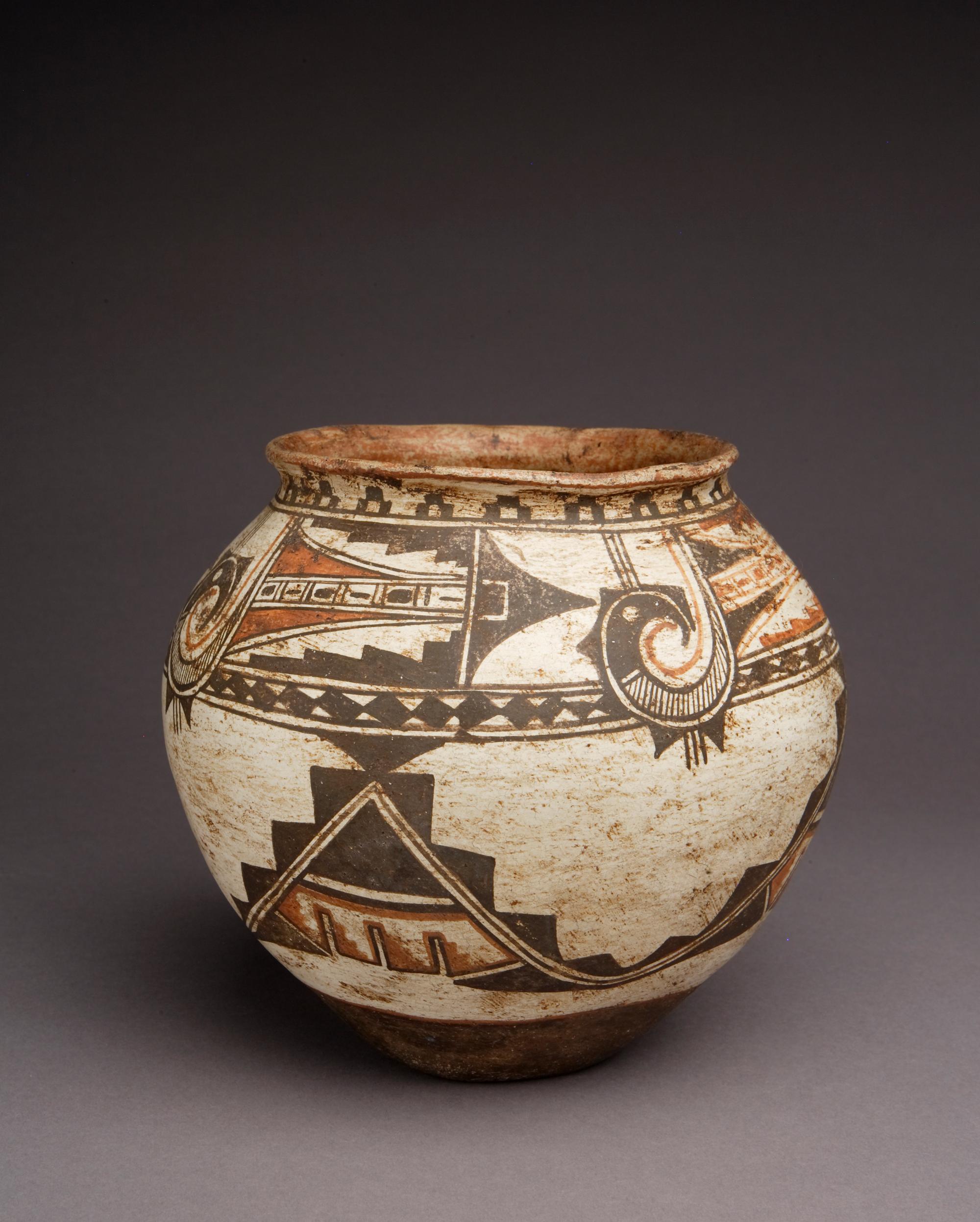
Photograph by Addison Doty. Copyright 2010 School for Advanced Research.
Water jar | K'yabokya de'ele
Date: 1920s
Artist or Maker: Unknown
Dimensions:
Dimensions: 17.7 × 20.3 cm (6 15/16 × 8 in.)
Weight: 0.9 kg (2 lb.)
Medium: clay | paints
Place Made:
Zuni Pueblo, McKinley County, New Mexico, Southwest, United States, North America
Object Number: IAF.1355
Not on view
Tribal Collection Review RemarksJim Enote and Octavius Seowtewa during collection review visit April 6 and 7, 2009 (Events Record “Collection Review: Zuni Tribe, Review 1”): This is not a ceremonial jar. Though it is classified on the catalog card as Pseudo-Ceremonial, it should no longer be classified this way because it was probably not made with the intention of making the item appear ceremonial. It is a jar in the form of a water jar, made to appear old by using “old-looking” designs and antiquing the surface. Though a water jar would be carried on the head, the base of this jar is too small to actually fit on a person’s head. The base was purposely worn down. There are no line breaks in the horizontal lines that separate the various design fields. This jar contains a zip-lock bag, wrapped in brown paper. Inside the bag there are three items; yellow ochre, turquoise fragments, and shell fragments. These items are offering materials that were likely placed inside the jar so that it would appear to be ceremonial in nature (even though it is not). Though these materials are correct for offerings, they are okay for research and photography (as is the jar itself). However, they should be stored outside of the jar. It was recommended they be stored in a box. It is alright to cover the box with a lid, but the offering materials should not be placed in a plastic bag.
The word for a water jar in Zuni is “k'yabokya,” which translates to “water container” in English. The intended use for these jars was to store and carry water, but they could also be used to store other items.
In Collection(s)
The Indian Arts Research Center, in collaboration with Native American community scholars, strives to present accurate collections records. Records may be updated as new information becomes available and is reviewed with the Native American community having cultural affinity to particular items. Please write to iarc@sarsf.org if you have questions or concerns related to the documentation.
